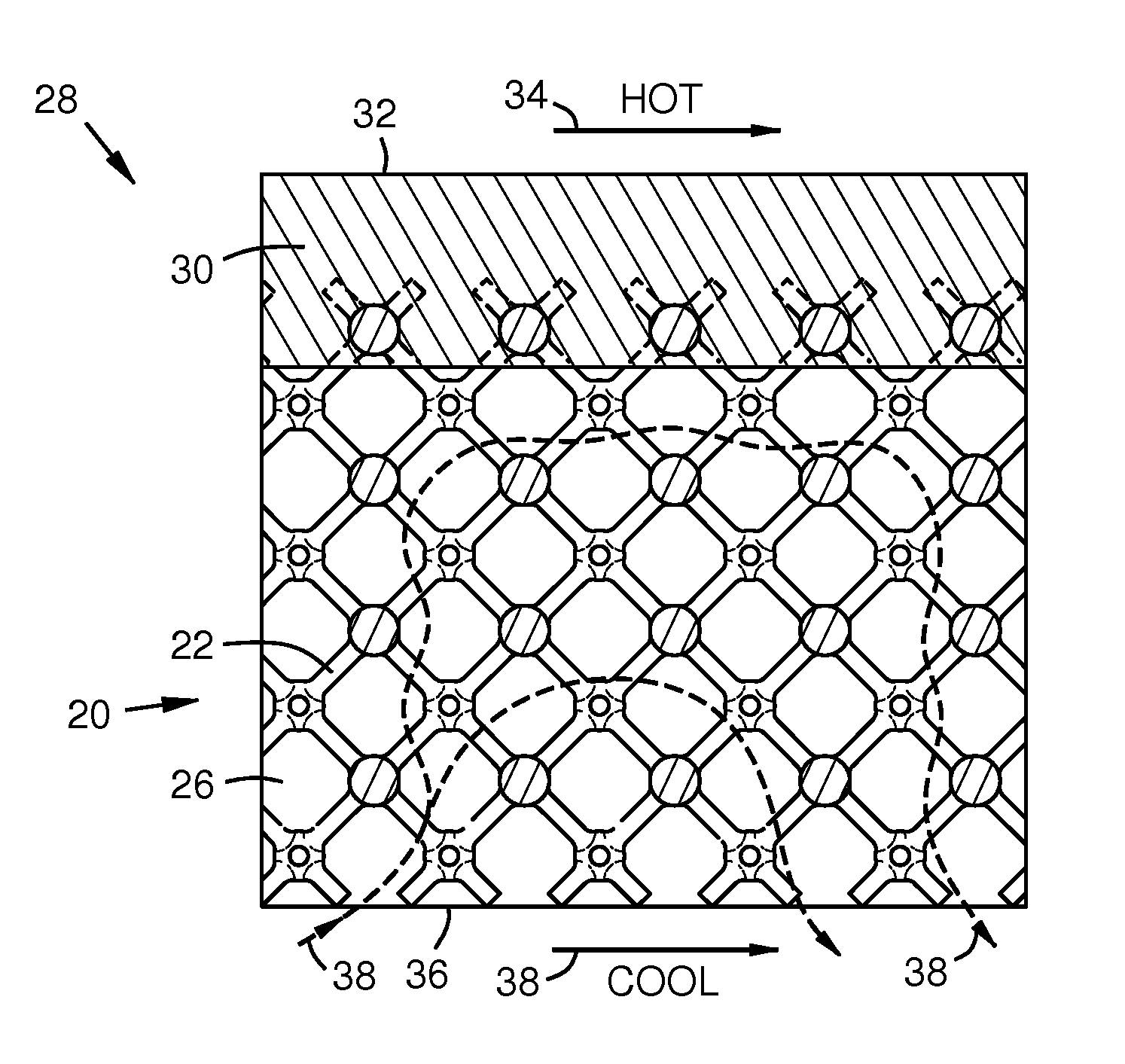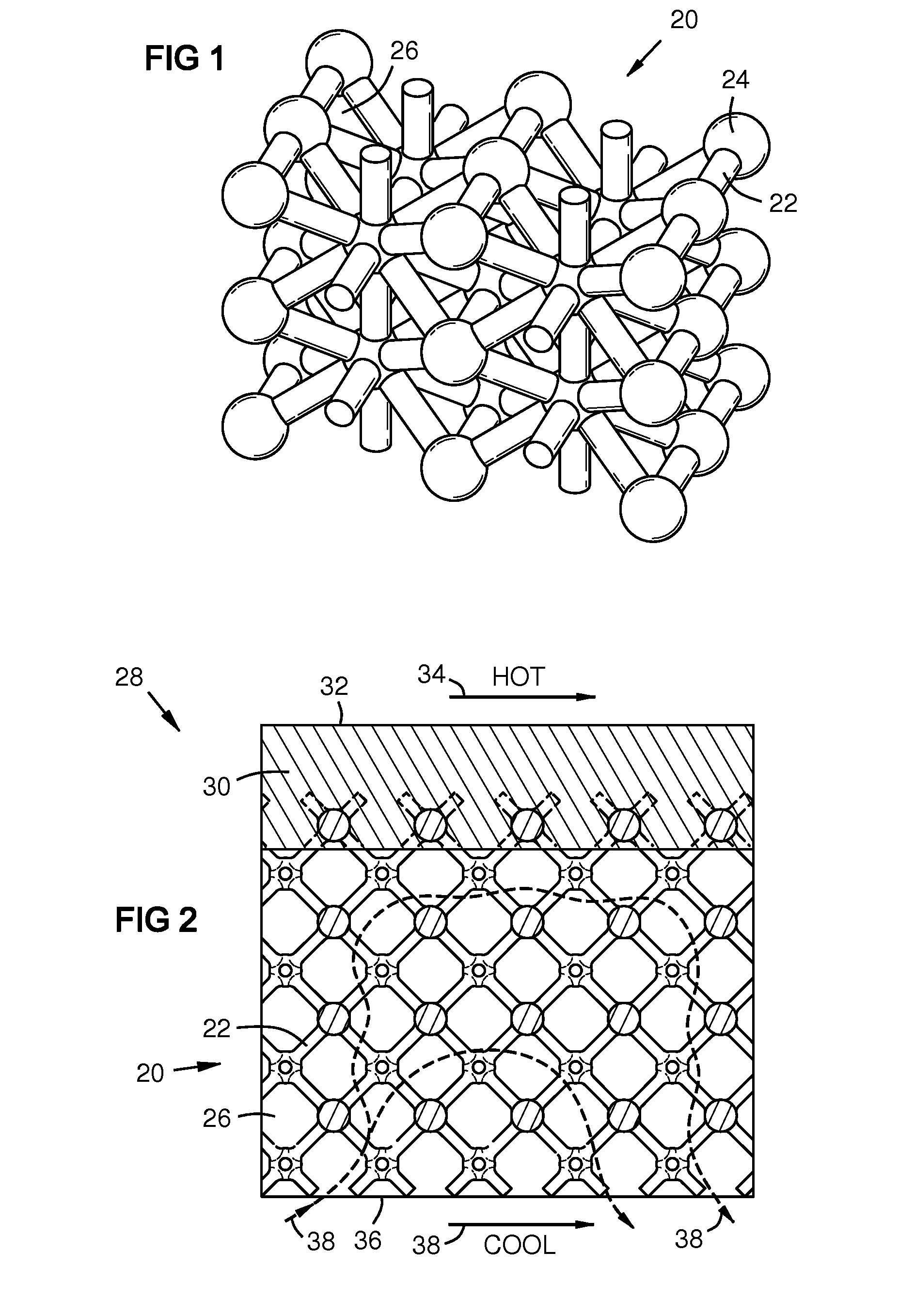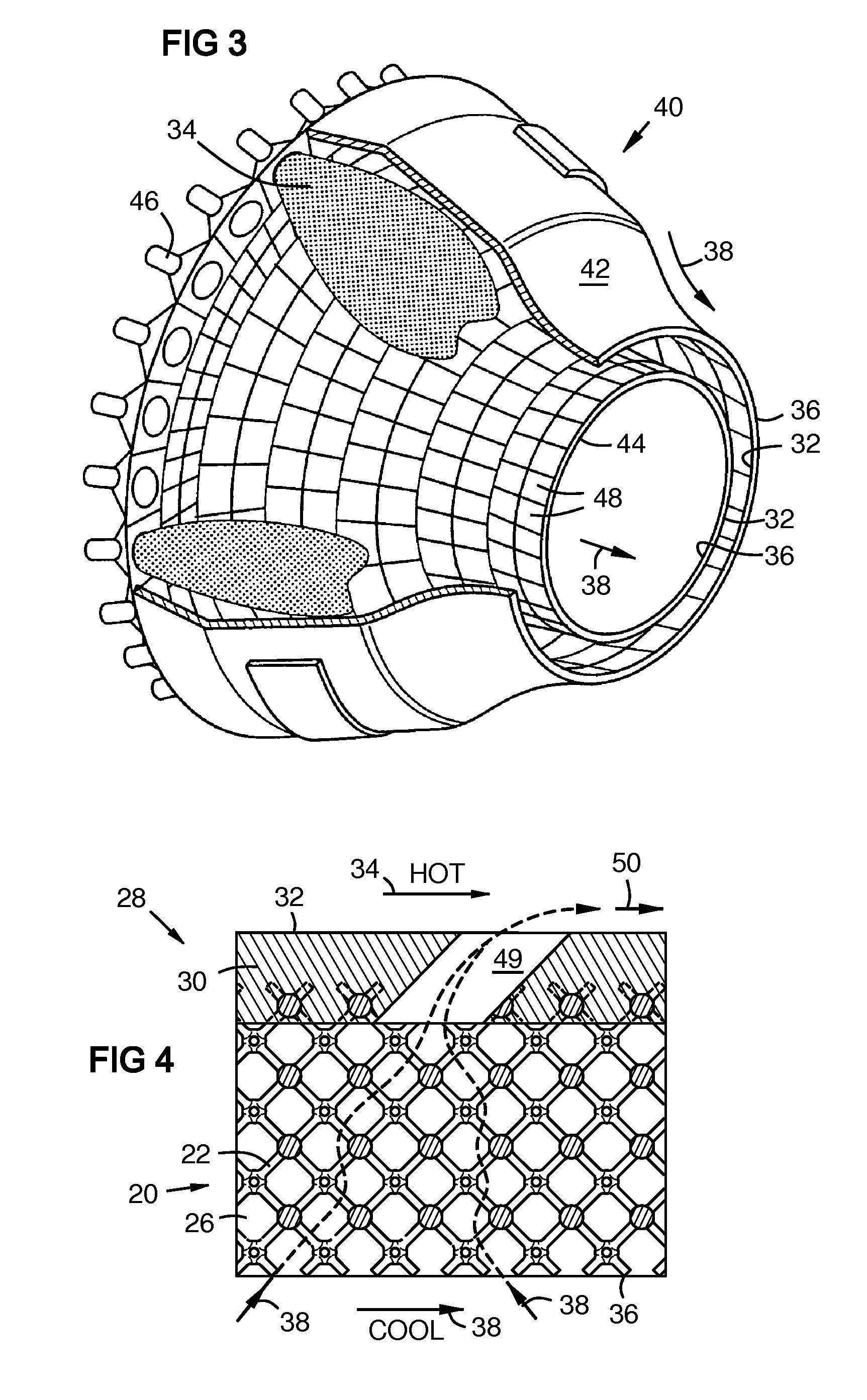Process for making a wall with a porous element for component cooling
a technology of porous elements and components, applied in the direction of laminated elements, machines/engines, light and heating apparatus, etc., can solve the problems of differential thermal expansion, difficulty in bonding different materials, and prior methods that did not provide different materials for the porous cooling elements and the structural elements of a componen
- Summary
- Abstract
- Description
- Claims
- Application Information
AI Technical Summary
Problems solved by technology
Method used
Image
Examples
Embodiment Construction
[0021]FIG. 1 shows a discrete porous construction 20 that may be used for cooling in the invention. The term “discrete” in this context means a construction with a geometry that is engineered and determinate, rather than random as with foam. Advantages of discrete porous constructions over random ones include strength, rigidity, and uniformity. A lattice geometry as in FIG. 1 is not a requirement of the invention, but is just one example of a discrete porous construction. It may comprise links 22 interconnected at nodes 24, providing passages 26 between the links. Such a construction may be formed by selective layer sintering or melting (SLS / SLM) or by other processes such as casting methods described in U.S. Pat. No. 7,141,812 of Mikro Systems Inc.
[0022]FIG. 2 shows a portion of a wall 28 formed by bi-casting a first structural layer 30 onto a porous construction 20. A first surface 32 of the wall 28 is exposed to a hot fluid 34, such as combustion gas. An opposed surface 36 of the...
PUM
| Property | Measurement | Unit |
|---|---|---|
| structural properties | aaaaa | aaaaa |
| thermal conductivity | aaaaa | aaaaa |
| temperature | aaaaa | aaaaa |
Abstract
Description
Claims
Application Information
 Login to View More
Login to View More - R&D
- Intellectual Property
- Life Sciences
- Materials
- Tech Scout
- Unparalleled Data Quality
- Higher Quality Content
- 60% Fewer Hallucinations
Browse by: Latest US Patents, China's latest patents, Technical Efficacy Thesaurus, Application Domain, Technology Topic, Popular Technical Reports.
© 2025 PatSnap. All rights reserved.Legal|Privacy policy|Modern Slavery Act Transparency Statement|Sitemap|About US| Contact US: help@patsnap.com



